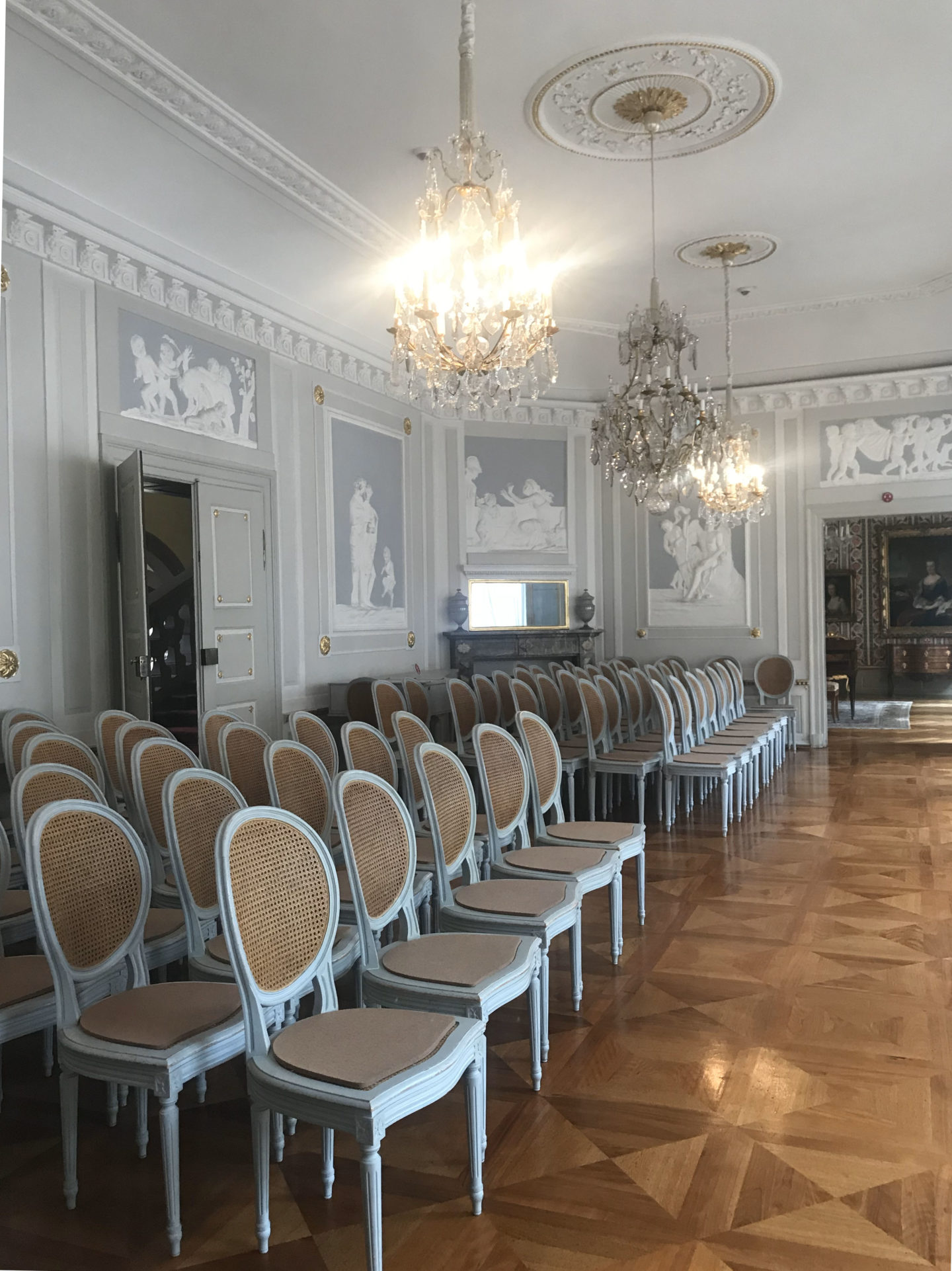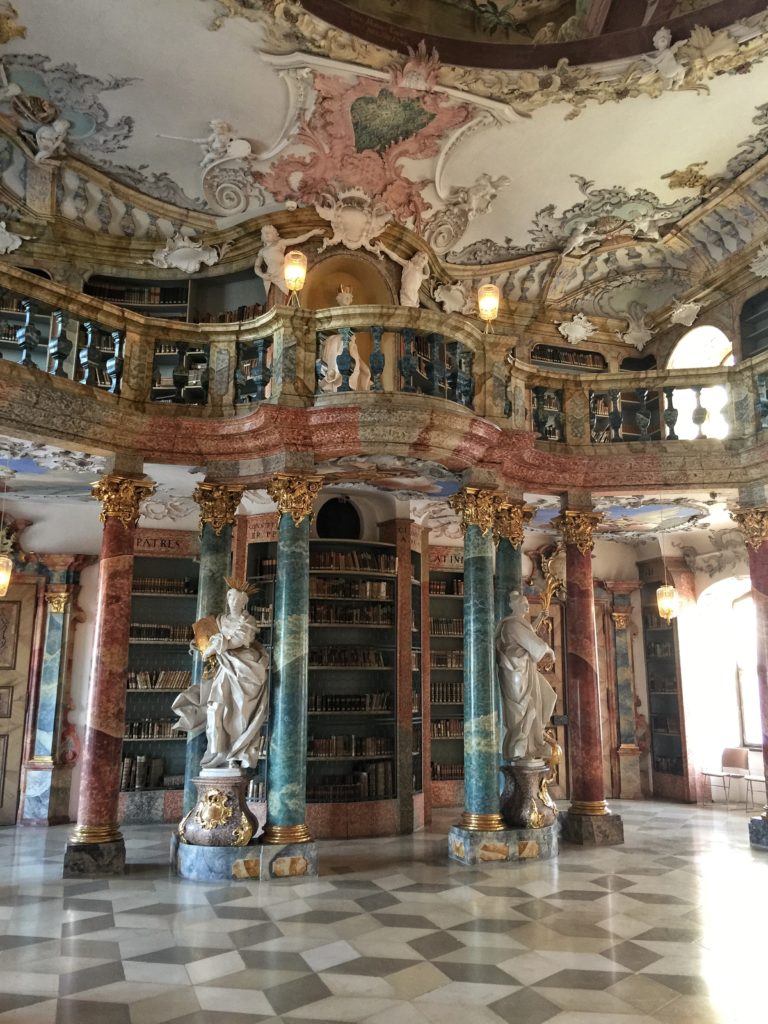Our city museum in Heidelberg has some fascinating exhibits, and I think it’s a shame I never see it in those ‘what to see in Heidelberg’ posts. It does an excellent job of putting the Heidelberg area in historical context – highlighting the extensive Roman settlement, and some of the personalities that lived in our glorious Heidelberg Castle. I highly recommend you make time for a half-day at the museum before you see all the sights of Heidelberg so you get the most out of your visit to my beautiful little town.
Kurpfälzisches – what does that mean?
The region that we now call Germany was once a patchwork, and I mean a very detailed patchwork, of duchies, free states, free cities, and bishoprics that shifted and changed allegiance every time someone powerful, somewhere, died. The term ‘Kurpfalz’ is translated to Elector Palatinate in English. From roughly 1200s through to around the early 1800s, the Holy Roman Emperor was chosen by a group of powerful princes, as well as a few assorted bishops – the number of which shifted over time, but somewhere from seven to ten people. The Kurpfalz refers to a region that covered up to the middle Rhine and Moselle valleys, parts of eastern France, and south down to around Karlsruhe, though the borders changed over time. It was one of the most important electoral regions, and Heidelberg was the capitol for much of this 600 year period. The term ‘Kurpfälzisches’ is the adjective form of this same word, because it’s describing the museum, so in English it would be Museum of the Elector Palatinate Region, essentially.
Museum in a palace
When you enter the museum off the Hauptstraße, you come in through the arched gate of the beautiful baroque Palais Morass. This building in itself is a bit of a wonder. Built in 1712 for Johann Philipp von Morass, who was rector of Heidelberg University for a time. Various nobles owned the palace for the next two hundred years (you can see von Bettendorff’s coat of arms above the entranceway from the mid 1700s), when it passed to the city of Heidelberg in 1906 to house the city’s art collection. You get to wander through the rooms of the Palais as you visit the museum, though there have been some modern extensions built in the courtyard.

Famous Heidelbergers
Heading up the staircase, you come face to face with a glorious painting of Heidelberg Castle and its gardens as they were imagined, though not quite completed, and a huge painting of Friedrich V, one of the most famous of the Prince Electors to live in the Heidelberg Castle. His wife was Elisabeth Stuart, daughter of James I of England, and it was for her that Friedrich commissioned the gardens. Moving through the nearby gallery, you can listen to stories in English on the audio guide about the dwarf tailor from Italy called Perkeo who became a vital member of the Heidelberg court.

Liselotte forever
My favourite Heidelberg historic personality has to be Liselotte. If you’ve watched the TV series Versailles, you’ve met her already. The acerbic wit of the French court of the Sun King, Liselotte grew up at Heidelberg Castle, and had many fond memories of climbing trees and exploring. She was married off to the French king’s brother in 1671, leaving her beloved Heidelberg behind forever. Her 60,000 letters to her friends and family back home in Germany are a masterclass in snarky observation on the French court. You’ll notice a few of the small tour boats and ferries on the river Neckar are named ‘Liselotte’ in her honour.

Walk with the ghosts of Goethe and Chopin
The next parts of the museum are in the Palais Morass proper. Wander these beautiful rooms, knowing that you’re standing where Goethe attended a dinner party, and Chopin gave a thank you concert to the surgeon who operated on his hand. I particularly like listening to the music samples played on the fragile and beautiful fortepiano – look for the numbers on little signs near the instrument. In the cabinets you can see some delicate examples of early Frankenthal porcelain, produced when the secret to making it was still new to Europe. Don’t forget to look up, there are some dramatic and unusual chandeliers in these rooms.

Roman Heidelberg
When I bring visitors to the museum, I skip the paintings and head downstairs for the archeology exhibits. Our castle tends to overshadow Heidelberg, in more ways than one, and your average day trip visitor may never hear about our extensive history as a Roman settlement. On the opposite bank of the river Neckar from the castle is the neighbourhood of Neuenheim, whose pretty Jugendstil (Art Nouveau) villas and riverside meadow make it an attractive place to live. Underneath the houses, though, are the remains of the Roman fortification and settlement. If you walk along the Neckarwiese (Neckar meadow, the green park on the riverside where everyone goes to barbeque) today, you can still see a few of the Roman stone bridge supports sticking out of the ground. In the archeological sections of the museum, you can see a life-size reconstruction of part of the Roman burial ground. The hilltop across the valley from the castle was special to many groups of people, hosting a Celtic hillfort, Roman temple of Mithras, and a monastery in the middle ages, and the museum has recreated several of these structures in models. Make sure to look at the 4-metre high Jupiter column, rescued a well shaft and nearly perfectly preserved. Possibly my favourite part of these exhibits is the discussion of a discovery of a shaft full of pottery, nearly 2,000 pots, tossed away. Most of them weren’t broken, so why were they disposed of? I can only imagine some poor pottery shop made 2,000 pieces in the wrong colour or something, but we’ll never know!

Visiting the Kurpfälzisches Museum in Heidelberg
It’s easy to stop in at the museum on a stroll down the Hauptstraße, it’s a little bit of a walk from the centre of the Old Town.
The museum is open year round from 10am-6pm, Tuesday to Sunday excepting holidays (Christmas Eve, Christmas Day, New Year’s Eve, New Year’s Day, Shrove Tuesday and 1 May)
Entrance is only €3 per adult, €1.80 on Sundays, and the audio guide is included in your ticket price
Children up to 16 years old are free
Audio guides are available in German, English, and Russian
There are free lockers for coats and large bags directly past the Admission desk, and they ask that you don’t take these into the museum.
Occasionally there are special exhibitions that require an additional entrance fee if you want to visit them.
There is a café in the garden, but it is not strictly attached to the museum, I have never tried it as the prices are a bit steep for me. If you’re looking for lunch after your museum visit, I recommend Gino’s for a wrap on house-made flatbread, it’s a short walk along the Hauptstraße towards the castle (number 113A) – it’s super tasty, very reasonably priced and the staff are lovely. If that’s not quite to your taste, I have a whole post on where to eat in Heidelberg that might help.
Kurpfälzisches Museum Heidelberg
Hauptstraße 97, 69117 Heidelberg, Germany




Looks like an incredible museum!